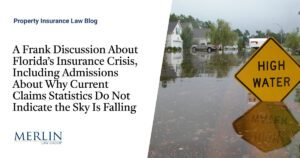How to perfect the science behind driving rates

Insurance companies are on a constant quest to price risk better using data scientists, actuaries and decades of loss history. Over the years, they have sought (and found) better proxies for driving risk, having started with age before moving on to zip codes, occupation and credit scores.
Little wonder that they have looked for ways to see inside the car to better understand how the vehicle is driven and gather additional information to help them set rates.
Yet, telematics has been a disappointment. Some consumers don’t seem to be crying out for usage-based insurance and evidence shows some of the models in use are only mildly predictive at best.
Why is that? Why is it that auto insurance companies have not found a way to significantly improve on the traditional metrics of age, zip code and the like despite all the technological advances of the last few decades?
Well, it’s mostly because of business models, not technology. The most popular telematics programs from the big auto insurers work in the same way: you go through a traditional signup process and they offer you a traditional price for six or 12 months. They then use an app to monitor your driving and as a result, you could earn up to a 30% discount. This has two problems. First, it’s a terrible consumer proposition. Secondly, there’s no way to raise rates on the worst drivers. Plus, of course, the insurer faces a problem upfront—charge too much for auto insurance (pre-discounts) and no one will sign up. Charge too little, and you’ll make no money.
How to perfect the science behind driving rates
The insurance industry can do better, but to do so, it needs to start over with a new business model. Prices need to go up as well as down. If you learn something about a driver that makes you reassess their likelihood of having an accident, that needs to quickly flow through to their rates. This works two ways. Firstly, it means you’re pricing risk better, and secondly, there’s little lag between changed behavior and changed prices.
Ultimately, prices should be entirely telematics-driven. But outdated business models are not the only reason most insurers have struggled with telematics: They’ve also (mostly) been measuring the wrong things.
General driver behavior vs. Conditions-based driver behavior
The industry has tended to focus on driver behavior. And why not—after all, their existing models are all about measuring individual risk, so why not extend that to individuals’ habits. Well, auto accident risk doesn’t work like that.
Take speeding. Most models measure the time a driver spends more than five miles above the speed limit (a little bad), and more than 20 miles above (very bad). But absent context, speeding is a poor predictor of accidents. Traveling at 85 miles per hour on an empty freeway on a sunny day? Well, that’s some of the safest driving you can do. Going 55 miles per hour when it’s snowing and the road is busy and the other traffic is doing 30 miles per hour is extremely dangerous.
And that’s far from the worst predictor. We track anticipative braking, and as far as we can tell, it has zero predictive power.
On the other hand, there are lots of measures that are predictive yet aren’t widely used. The key, though, is to change the question: it’s not a case of is the driver behaving well? Instead, we prefer is the driver behaving appropriately, given the conditions? Good drivers change their behavior as the conditions change. Bad drivers do not.
Insurance companies are not—by and large— technology companies. Instead, they rely on third-party technology providers, meaning they have not managed to iterate their product to make the most of telematics.
That has to change. If telematics providers can consistently price customers more accurately than traditional vendors, then they will win the most profitable customers.







